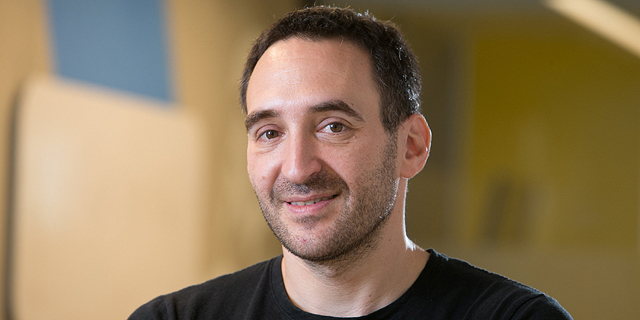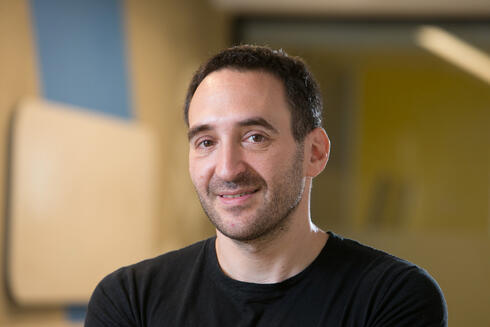
Round B
PMF: The Key to POC
Before a startup rushes to reach the Proof of Concept stage, it should first tackle Product Market Fit
A startup is a high-risk venture. This is true for the investors who risk their money, for the employees who invest their time and energy, and certainly for the entrepreneurs who invest their whole world in it. The level of risk decreases as the venture progresses toward what is called "proof of concept." Analytical analysis of risk factors will include the maturity of the management team, its financial strength, and ultimately the decisive factor is the degree of responsiveness that the company's product or service receives from the target market, or in English - Product Market Fit (PMF).
The main reason for a rejection by a potential investor in a project in the early stages, is that not enough indications have yet been accumulated that the company is on the runway, soon ready to take flight. Or in other words: the company is considered to have a high risk profile because it has not yet cracked the desired product market fit. Of course, there is a built-in failure in this assumption, since venture capital investments are by definition risky. The prospect of a phenomenal return involves accepting the high risk profile. By the same token, when an investor tells you that he is hesitant because he lacks proof of market responsiveness, he is actually saying that the level of risk scares him, just as in the dating world you can say "I'm just in a confused period right now" or "I still haven't gotten over my last breakup." We all understand that behind all these excuses is a simple truth: they simply are not "turned on" enough by us.
So how do we define that elusive PMF that will make investors, partners, job applicants and especially ourselves get “turned on” for what we do and know we are on the right path? Of course it depends on the specific circumstances and line of business of each company. By and large, a measurable parameter should be defined that neutralizes the significant risk factors. The most common parameter is the number of customers. In many companies, responsiveness from a large number of customers will convince you that a product has PMF and is worth investing in. But there are cases where an initial response from many customers can result from a particularly successful marketing campaign, so the number of customers will not be an indication of PMF. For example, a free product sometimes manages to get publicity or a boost as a result of some collaboration and bring along with it a large amount of defects in a short amount of time. And in order to convince that the same response is indeed evidence of market suitability, an investor will want to examine not only the number of customers but also the degree of retention of those customers to be convinced that there is indeed a match and not just a passing wave of temporary responsiveness.
In other cases, an initial response may be perceived as an insufficient indication and the investor will seek to see the willingness of those customers to pay for the product. For example, if we take a product that is usually charged for, such as a taxi ride, and offer it for free, initial response from many customers will not be a strong enough indicator of the product's attractiveness and commercial feasibility. To address the main risk factor, in this case the differentiation from other transportation services, we will have to prove that customers are willing to pay for this service at a profitable price for the service provider and the number of customers will not be enough. Even what is perceived as the "ultimate" index, the willingness of customers to pay, can be elusive. Sometimes a company does a great job of convincing customers to pay for a product but if over time the product does not bring enough value to customers they are likely to stop using it. So both investors and of course executives, should be suspicious of any swearing by PMF and need to check its details and be convinced that this is not a mirage but a true finding of a fit of the product to the market.
In the previous company I ran, Playbuzz, PMF was proven at an early stage using a unique viral index. We showed that the content created through the Playbuzz content creation platform received a share rate that is several times higher (more than ten times) than what is accepted in the market, so we convinced investors and partners that content created through the platform will be widely distributed. We thereby eliminated the significant risk factor that had troubled them regarding our product category, content creation systems, and showcased our competitive advantage over alternative platforms. In my current company, Piggy, we market a mobile app that allows the creation and distribution of content produced with the help of the app. The capital we have raised so far allows us another two years of trial and error, at the end of which we will be required to prove PMF in order to justify further rounds of raising funds. If we get on the highway and experience a viral explosion of the sort we experienced with Playbuzz, for example, it will probably be easy for us to persuade investors to continue financing the company's activities.
But the powerful meteoric rise we experienced in Playbuzz was rare, so the more plausible scenario is that we will be able to arrive at a preliminary proof of concept on a smaller scale, but with a high enough significance to convince that with a little more time and money we have a reasonable chance of conquering the market. So in recent months, since the soft launch of the product, we have been trying to define for ourselves the same parameters that will constitute a distinct PMF. The way to find them is to start by creating a list of risk factors, identify which of the factors can be "attacked" and arrive at usage indices that will neutralize them.
In our case, it is an app for creating, distributing and consuming content. In the first stage - we must show that valuable content can be produced with the help of the application. We decided to measure this not with the number of content creators, as in many platforms like YouTube, TikTok and others - a small percentage of users produce content compared to the high number of those who consume it - but using one measure: the percentage of users who share the content created with others. Our assumption is that if someone has created a content item like an article, blog post or story, and he distributes it on our system, it is a sign that he feels the result is good and hence that the platform has been proven to provide a good solution to his needs as a content creator.
In the second stage, we want to prove that the content created in the system brings forth broad interest. The parameter we set for measurement is the percentage of people who are exposed to content created using Piggy and consume it in full. We measure what percentage of the people who received a link to an article created in Piggy, or clicked on one from the app, read it from beginning to end. In an age where people show little patience and often jump frantically between content items, if it seems that a high percentage of people give the content created in Piggy full attention, this would be a good indication of the quality of the content created in the app.
Related articles:
And in the last stage, we want to prove the closing of the viral circle, and use it to eliminate the risk factor of the difficulty in distributing the application. If it seems that out of the people exposed to the system's content, a significant percentage download the app in order to produce content themselves, or to be exposed more frequently and personalized to the content of others, we will prove that it can be widely distributed without high marketing costs.
If we do succeed in all of these, it still does not mean that the company has achieved all its goals. There are still questions (risk factors) regarding its ability to generate revenue, for example. But these parameters will take us beyond the PMF hurdle and allow us to move on to the next stages in organizational growth.
Shaul Olmert is a serial entrepreneur and the co-founder and CEO of mobile app developer Piggy. He formerly founded interactive content company Playbuzz Ltd. You can find his previous columns here.
